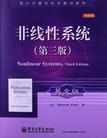非线性系统
出版时间:2012-5 出版社:电子工业出版社 作者:哈森·K.哈里尔 页数:749 字数:1390000
Tag标签:无
内容概要
本非线性系统的研究近年来受到越来越广泛的关注,国外许多工科院校已将“非线性系统”作为相关专业研究生的学位课程。本书是美国密歇根州立大学电气与计算机工程专业的研究生教材,全书内容按照数学知识的由浅入深分成了四个部分。基本分析部分介绍了非线性系统的基本概念和基本分析方法;反馈系统分析部分介绍了输入-输出稳定性、无源性和反馈系统的频域分析;现代分析部分介绍了现代稳定性分析的基本概念、扰动系统的稳定性、扰动理论和平均化以及奇异扰动理论;非线性反馈控制部分介绍了反馈线性化,并给出了几种非线性设计工具,如滑模控制、李雅普诺夫再设计、反步设计法、基于无源性的控制和高增益观测器等。此外本书附录还汇集了一些书中用到的数学知识,包括基本数学知识的复习、压缩映射和一些较为复杂的定理证明。本书已根据作者于2012年4月2日更新过的勘误表进行过更正。
作者简介
作者:Hassan K. Khalil(哈森 K. 哈里尔)
书籍目录
1 introduction
1.1 nonlinear models and nonlinear phenomena
1.2 examples
1.2.1 pendulum equation
1.2.2 tunnel-diode circuit
1.2.3 mass-spring system
1.2.4 negative-resistance oscillator1.2.5 artificial neural network
1.2.6 adaptive control
1.2.7 common nonlinearities
1.3 exercises
2 second-order systems
2.1 qualitative behavior of linear systems
2.2 multiple equilibria
2.3 qualitative behavior near equilibrium points
2.4 limit cycles
2.5 numerical construction of phase portraits
2.6 existence of periodic orbits
2.7 bifurcation
2.8 exercises
3 fundamental properties
3.1 existence and uniqueness
3.2 continuous dependence on initial conditions and
parameters
3.3 differentiability of solutions and sensitivity equations
3.4 comparison principle
3.5 exercises
4 lyapunov stability
4.1 autonomous systems
4.2 the invariance principle
4.3 linear systems and linearization
4 4 comparison functions
4.5 nonautonomous systems
4.6 linear time-varying systems and linearization
4.7 converse theorems
4.8 boundedness and ultimate boundedness
4 9 input-to-state stability
4.10 exercises
5 input-output stability
5.1 l stability
5.2 l stability of state models
5.3 l2 gain
5.4 feedback systems: the small-gain theorem
5.5 exercises
6 passivity
6.1 memoryless functions
6.2 state models
6.3 positive real transfer functions
6.4 l2 and lyapunov stability
6.5 feedback systems: passivity theorems
6.6 exercises
7 frequency domain analysis of feedback systems
7.1 absolute stability
7.1.1 circle criterion
7.1.2 popov criterion
7.2 the describing function method
7.3 exercises
8 advanced stability analysis
8.1 the center manifold theorem
8.2 region of attraction
8 3 invariance-like theorems
8.4 stability of periodic solutions
8.5 exercises
9 stability of perturbed systems
9.1 vanishing perturbation
9.2 nenvanishing perturbation
9.3 comparison method
9.4 continuity of solutions on the infinite interval
9.5 interconnected systems
9.6 slowly varying systems
9.7 exercises
10 perturbation theory and averaging
10.1 the perturbation method
10.2 perturbation on the infinite interval
10.3 periodic perturbation of autonomous systems
10.4 averaging
10.5 weakly nonlinear second-order oscillators
10.6 general averaging
10.7 exercises
11 singular perturbations
11.1 tlie standard singular perturbation model
11.2 time-scale properties of the standard model
11.3 singular perturbation on the infinite interval
11.4 slow and fast manifolds
11.5 stability analysis
11.6 exercises
12 feedback control
12.1 control problems
12.2 stabilization via hinearization
12.3 integral control
12.4 integral control via linearization
12.5 gain scheduling
12.6 exercises
13 feedback linearization
13.1 motivation
13.2 input-output linearization
13.3 full-state linearization
13.4 state feedback control
13.4.1 stabilization
13.4.2 tracking
13.5 exercises
14 nonlinear design tools
14.1 sliding mode control
14.1.1 motivating example
14.1.2 stabilization
14.1.3 tracking
14.1.4 regulation via integral control
14.2 lyapunov redesign
14.2.1 stabilization
14.2.2 nonlinear damping
14.3 backstepping
14.4 passivity-based control
14.5 high-gain observers
14.5.1 motivating example
14.5.2 stabilization
14.5.3 regulation via integral control
14.6 exercises
a mathematical review
b contraction mapping
c proofs
c.1 proof of theorems 3.1 and 3.2
c.2 proof of lemma 3.4
c.3 proof of lemma 4.1
c.4 proof of lemma 4.3
c.5 proof of lemma 4.4
c.6 proof of lemma 4.5
c.7 proof of theorem 4.16
c.8 proof of theorem 4.17
c.9 proof of theorem 4.18
c.10 proof of theorem 5.4
c.11 proof of lemma 6.1
c.12 proof of lemma 6.2
c.13 proof of lemma 7.1
c.14 proof of theorem 7.4
c.15 proof of theorems 8.1 and 8.3
c 16 proof of lemma 8 1
c.17 proof of theorem 11.1
c.18 proof of theorem 11.2
c.19 proof of theorem 12.1
c.20 proof of theorem 12.2
c.21 proof of theorem 13.1
c.22 proof of theorem 13.2
c.23 proof of theorem 14.6
note and references
bibliography
symbols
index
章节摘录
版权页: 插图: Chapter 4 Lyapunov Stability Stability theory plays a central role in systems theory and engineering.There are different kinds of stability problems that arise in the study of dynamical systems.This chapter is concerned mainly with stability of equilibrium points.In later chapters,we shall see other kinds of stability,such as input-output stability and stability of periodic orbits.Stability of equilibrium points is usually characterized in the sense of Lyapunov,a Russian mathematician and engineer who laid the foundation of the theory,which now carries his name.An equilibrium point is stable if all solutions starting at nearby points stay nearby; otherwise,it is unstable.It is asymptotically stable if all solutions starting at nearby points not only stay nearby,but also tend to the equilibrium point as time approaches infinity.These notions are made precise in Section 4.1,where the basic theorems of Lyapunov's method for autonomous systems are given.An extension of the basic theory,due to LaSalle,is given in Section 4.2.For a linear time-invariant system (x)(t) = Ax(t),the stability of the equilibrium point x = 0 can be completely characterized by the location of the eigenvalues of A.This is discussed in Section 4.3.In the same section,it is shown when and how the stability of an equilibrium point can be determined by linearization about that point.In Section 4.4,we introduce class K.and class K.L functions,which are used extensively in the rest of the chapter,and indeed the rest of the book.In Sections 4.5 and 4.6,we extend Lyapunov's method to nonautonomous systems.In Section 4.5,we define the concepts of uniform stability,uniform asymptotic stability,and exponential stability for nonautonomous systems,and give Lyapunov's method for testing them.In Section 4.6,we study linear timevarying systems and linearization.
编辑推荐
《国外计算机科学教材系列:非线性系统(第3版)(英文版)》既可以作为研究第一学期非线性系统课程的教材,也可以作为工程技术人员、应用数学专业人员的自学教材或参考书。
图书封面
图书标签Tags
无
评论、评分、阅读与下载
用户评论 (总计22条)
- 非线性系统的经典书籍,英文版值得收藏
- 还行吧,挺快的,比较经典的一本非线性参考书
- 和英文原版内容一样无删节
- 超值。我原来的第二版英文版等了好几年都没买上。这次买上了,非常高兴。
- 中英各买了一本 内容很详细
- 内容经典,值得一看
- 原版图书,就是不错。在当当促销时买的,大概打了五折,感觉物超所值,赞一个
- 非常经典的工具书
- 帮老公买的,我也看不懂。他需要。发货很快。
- 很经典的好熟,强烈推荐。
- 的湖南觉得才放假吗就好的幸福就
- 质量不错,相当的不错
- 一本英文书,质量可以,内容还没有看,传说中还不错吧
- 挺好的教材,就是英文还需要花点时间啊
- 书很经典,可是当当太差了,我勒个去,买书居然不按时送货,真是**,送货快递也不好,再也不在这买书了
- 经典教材,学习控制的好书。对于非线性系统的定量定性分析很全面,英文通俗易懂。
- 师兄推荐的书,看了第一章到59页时,发现折页,虽然内容没有缺失,但是很不美观。着急看书,况且包装都拆掉扔了,就不退换了。
- 没得说 本领域经典中的经典 不过内容相对基础,还没有完全展开。
- 书质量挺好的,这本书的内容很值得学习
- 包装完好,字迹清晰,发货快,因为是给美国的儿子买的,具体内容待看过后在追击评论
- 老师给推荐的教材,应该还不错!
- This book is about the knowledge of nonlinear system. it detailed in the book. I'm like it very much.
推荐图书
- 抗日战争时期中国反空袭斗争研究
- 论思想政治教育与实践人学思维
- 战斗力生成模式转变
- 训练的科学方法
- 中国海军军人手册
- 攻心说话术
- 学会选择懂得放弃
- 推销有道
- 忠言逆耳
- 老师教你知识 我教你智慧
- 培养孩子高财商的100个细节
- 如何开家赚钱的服装店
- 智慧幽默术
- 智慧减压术
- 期终冲刺百分百.五年级英语 N版
- 期终冲刺百分百.四年级英语 N版
- 期终冲刺百分百.三年级英语 N版
- 期终冲刺百分百.二年级英语 N版
- 期终冲刺百分百 九年级化学
- 期终冲刺百分百.一年级英语 N版
- 期终冲刺百分百 九年级物理
- 期终冲刺百分百 八年级物理
- 期终冲刺百分百.九年级英语 新世纪版(全一册)
- 期终冲刺百分百.八年级英语 新世纪版
- 期终冲刺百分百.七年级英语 新世纪版
